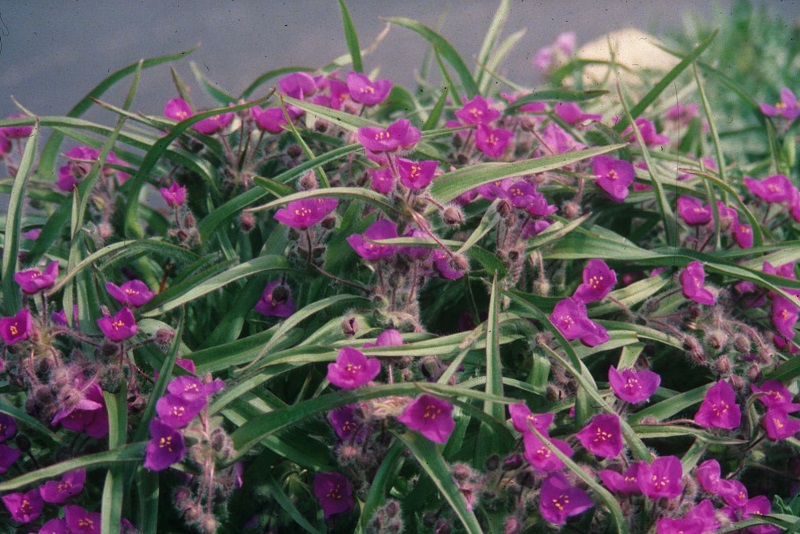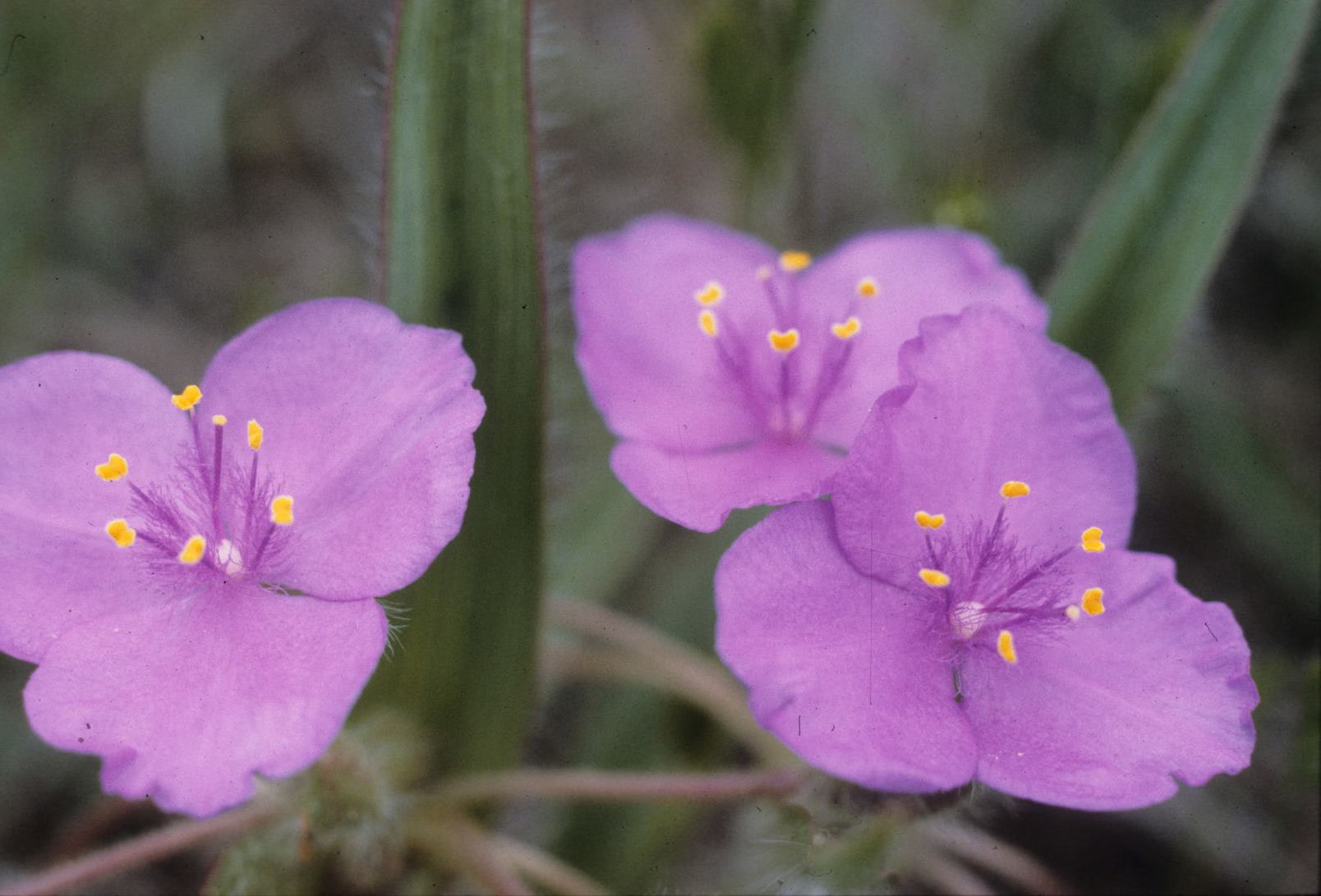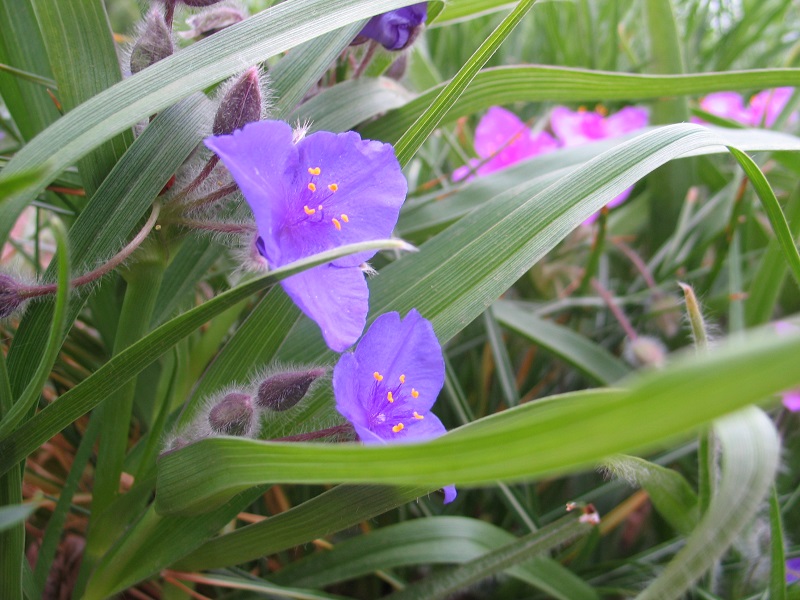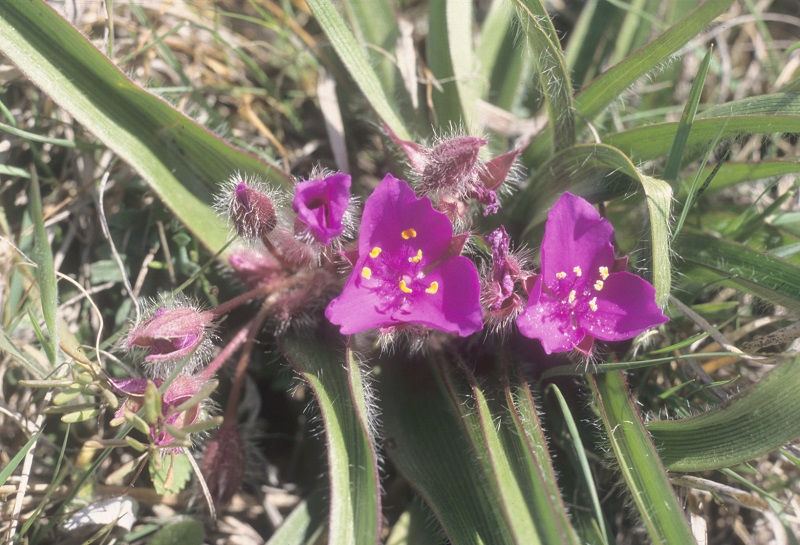Garden centers and nurseries carry more native plants each year, because gardeners have caught on to the many benefits that native perennials – such as milkweeds, coneflowers, blazing stars, black-eyed susans, and penstemon – provide aesthetically and environmentally. One of the best native plants for early spring bloom is spiderwort. They are fantastic in the gardens right now. Native spiderworts are excellent alternatives for naturalized or xeric plantings. Ohio spiderwort (Tradescantia ohiensis) is the most common, prevalent in much of the Great Plains and eastern United State. It reaches three feet and has striking blue, rose or white flowers. Its cousin, shortstem spiderwort (Tradescantia tharpii) is not as common, but has more ornamental characteristics and growth habit. It exhibits excellent drought tolerance with minimal maintenance requirements.
Shortstem spiderwort’s low growth habit and diverse flower colors make it a welcome addition to the front of any rock garden or perennial border. It is a prolific bloomer, covering itself with large three-petaled flowers in April and May. At least three distinct flower colors exist in our plantings, purple, blue and rose. I use this plant along the front of our perennial beds with summer and fall blooming perennials, because it does go dormant during the summer as a natural defense against the heat. I remove the brown leaves in the early summer and it greens back in late August as a rosette of hairy, pointed leaves. With proper planning, shortstem spiderwort gives the landscape an exotic—yet native and hardy—spring component. Honeybees and bumblebees flock to the flowers. The diversity of pollinating insects that this plant attracts is a joy to watch.
Tradescantia tharpii reaches a mature height of 12 to 15 inches and 15 to 18 inches wide in full sun. This species is multi-stemmed, forming a dense mound of green foliage. Leaves are linear-lanceolate, pubescent, giving a whitish cast, and have red translucent margins. The seed heads all seem to dry at the same time so seed collection is made easy, unlike Ohio spiderwort where the seeds ripen over an extended period. Seeds are oblong, gray and compressed about one eighth of an inch long.
It prefers a well-drained soil, but it can adapt to moister locations as long as there is ample drainage. I have grown it for years in a gravel-amended sandy loam soil with no problems; plants in heavy clay or sites with poor drainage resulted in slow plant growth. This is one plant that thrives on neglect, as long as it is properly sited. Established plants are long lived. Plants in the Arboretum have been growing in established beds for up to ten years.
I have not observed any disease or insect problems. In the fall and winter, however, rabbits will eat the rosette of leaves, stunting the spring growth.
You can find this plant at our spring and fall sales or produce it through seed propagation. A warm, dry treatment before sowing the seed in a mixture of coarse perlite and potting soil gives the best germination. Germination should occur in about 7 to 15 days. Divisions of existing plants can be taken every two to four years depending on lateral growth.
For the native plant enthusiast who wants to view this plant in a natural setting, Tradescantia tharpii can be seen growing on clay, sand or rocky soils in prairies and open woods. Native from central Kansas to southwest Missouri and south into northern Texas, it is essentially restricted to the Great Plains.




